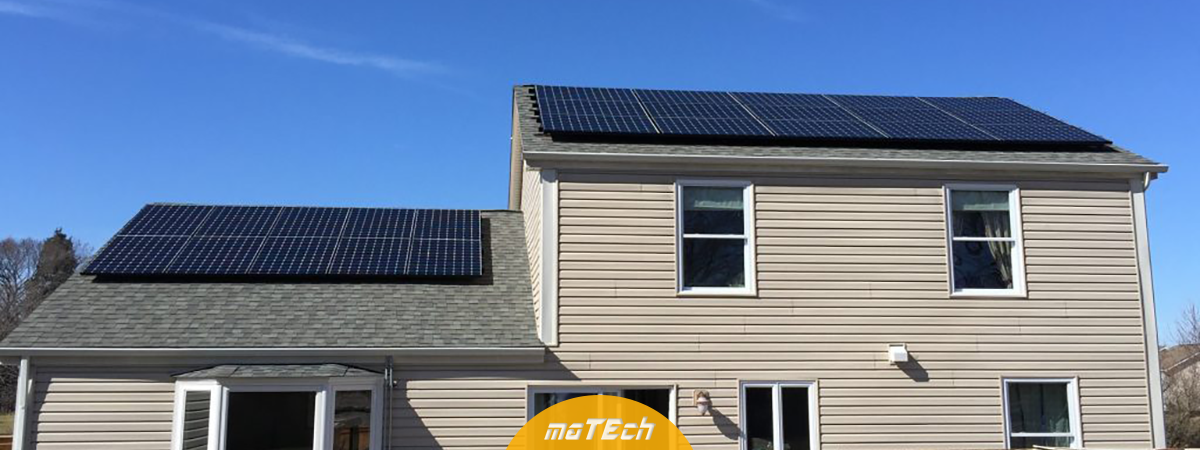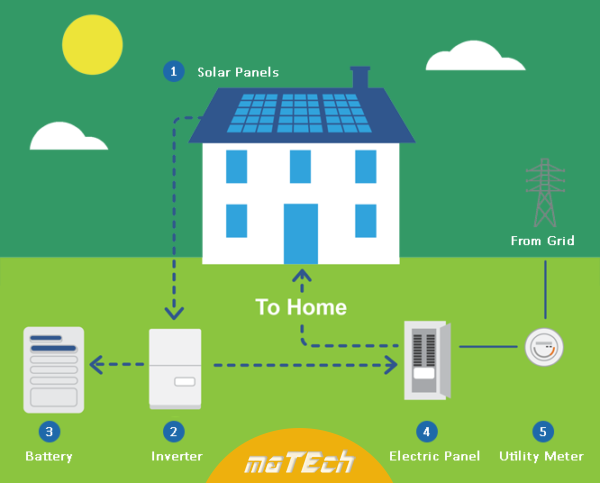We need electricity for the many comforts of modern life – from lighting, to appliances like refrigerators, air conditioners and heating units. So it pays to have a back-up system, especially in hospitals, schools and public buildings, but also in your own house. In the event of grid failure, the back-up system powers up immediately to continue supplying your critical machines and appliances.
Solar Back-up Systems

1. Solar modules
The solar modules on your roof silently convert sunlight into emissions-free direct current.
2. Inverters
The direct current produced by the solar modules is then converted into grid-compatible alternating current and fed into the local grid.
3. Grid feed electricity meter
The grid feed electricity meter is installed next to your existing electricity meter. It measures the amount of electricity in kilowatt hours that you feed into the public grid and indicates how much you’ve produced.
4. Electricity meter
You continue to draw electricity for personal use from the public grid. It is measured like always by the electricity meter and billed by your energy provider.
5. Backup-Inverter
In case the 230V grid goes dark, the back-up inverter powers up to supply solar electricity until the public grid is normalized.

6. Switching device
Should an emergency occur, your solar installation disconnects automatically from the public grid and switches immediately to off-grid power supply.
7. Battery
Direct current is stored in the battery until it is needed during an electrical blackout.
8. Monitoring
Monitor all your installation data via SMS, e-mail or Internet to make sure it is running optimally and to calculate your earnings
